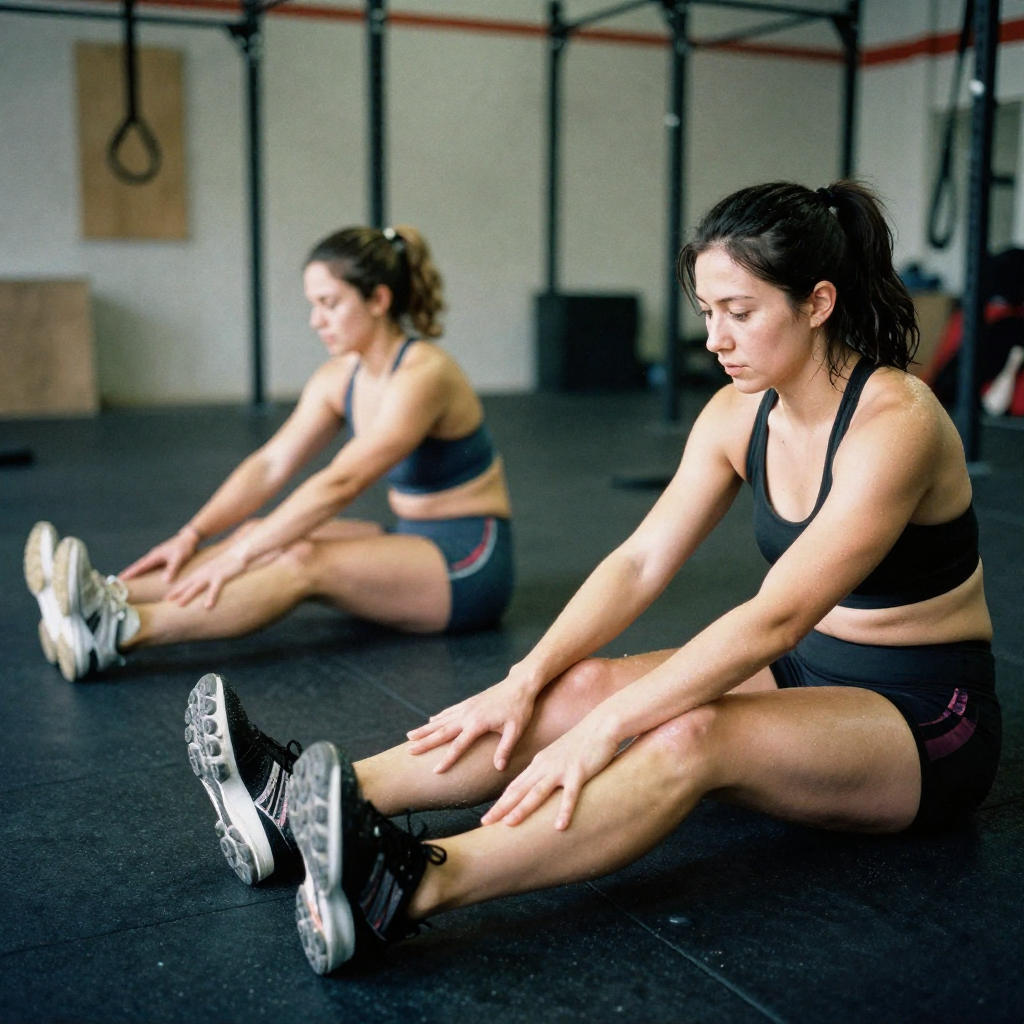The Comeback of the Simplest Exercise
In an age where fitness trends change every few months, from high-intensity workouts to smart gym gadgets, walking has quietly remained undefeated. It’s the oldest, simplest, and most accessible form of exercise.
And in 2025, backed by strong research and growing awareness around sustainable health, walking is making a powerful comeback, not just as “light activity,” but as a cornerstone of physical fitness, mental clarity, and longevity.
Why Walking Matters More Than Ever
Modern life keeps us glued to screens and chairs. Even gym-goers often spend most of their day sitting, driving, typing, scrolling, or watching. Walking reintroduces the movement our bodies were built for.
Studies show that walking just 30 minutes a day can:
- Reduce all-cause mortality by up to 30%
- Lower risk of cardiovascular disease by 27%
- Decrease depression symptoms by 47%
- Improve creativity, focus, and mental clarity
But what makes walking so powerful isn’t just the calories burned, it’s how it restores natural movement patterns and builds foundational strength and mobility.
The Science of Walking and Mobility
Walking is the most fundamental functional movement, involving almost every major muscle group, joint, and stabilizer.
When you walk:
- Your hips extend and rotate, improving flexibility.
- Your core stabilizes your trunk, strengthening posture.
- Your ankles and knees coordinate, maintaining balance.
- Your arms swing, enhancing upper-body mobility and rhythm.
Unlike many gym exercises, walking works the body as an integrated system, not as isolated muscles. It’s a full-body tune-up that improves how you move throughout the day.
Walking as a Foundation for All Other Training
Think of walking as your base layer of fitness. Whether you lift, run, cycle, or practice yoga, consistent walking enhances everything.
- Improves Recovery: Walking increases blood flow, delivering nutrients to muscles post-workout.
- Enhances Joint Health: Low-impact movement lubricates joints and strengthens connective tissue.
- Supports Weight Management: Walking burns fat efficiently without stressing the nervous system.
- Boosts Endurance: Builds aerobic capacity, allowing better performance in strength and cardio training.
Even elite athletes use walking as an active recovery tool to maintain longevity and joint integrity.
Daily Movement vs. Exercise: The Hidden Difference
Most people think they’re active because they “work out” 3-4 times per week. But research now shows it’s total daily movement, not just workouts, that determines long-term health.
| Activity Type | Frequency | Impact |
| Structured workouts | 3–5 days/week | Improves strength & fitness |
| Everyday walking | Daily | Maintains metabolism, joint health, and brain function |
| Sitting | 8–10 hours/day (average) | Reduces circulation, weakens posture, increases insulin resistance |
Key Insight: You can’t “out-gym” an inactive lifestyle. But you can dramatically improve your health just by walking more every day.
The 3 Types of Walking You Should Include
- Easy Recovery Walks
- Purpose: Reduce stress, improve circulation, and recover from workouts.
- Intensity: Light; you should be able to hold a full conversation.
- Duration: 20–40 minutes daily.
- Brisk Fitness Walks
- Purpose: Strengthen the heart and lungs, burn calories, and build stamina.
- Intensity: Moderate; conversation feels slightly challenging.
- Duration: 30–60 minutes, 3–5 times per week.
- Purposeful Movement Walks
- Purpose: Integrate walking into daily life, errands, commuting, calls, and breaks.
- Intensity: Variable, natural.
- Duration: Throughout the day, aim for 8,000–10,000 total steps.
Combining all three creates a sustainable rhythm that improves physical and mental well-being without burnout.
Also Read the Latest: Is Walking 10000 Steps Enough for Your Health Goals?
How Walking Enhances Posture and Joint Health
Poor posture and stiff joints are common side effects of desk jobs.
Walking counteracts both by re-engaging the muscles that support your frame.
- Opens Hips: Every step extends tight hip flexors.
- Strengthens Core: The natural sway activates stabilizers.
- Realigns Shoulders: The rhythmic arm swing resets shoulder mechanics.
- Mobilizes Ankles: Prevents stiffness and improves gait control.
Walking acts like active physiotherapy, rebuilding your natural alignment without pain or complexity.
Mental Benefits of Walking: Movement for the Mind
Walking doesn’t just strengthen the body, it also resets the brain. According to a 2024 study by Harvard Medical School, regular walking is linked to improved mood, reduced anxiety, and enhanced cognitive performance.
It helps boost creativity, lowers cortisol (the body’s main stress hormone), and increases the production of serotonin and dopamine, chemicals that promote happiness and mental balance.
Even a short walk outdoors during lunch can significantly improve focus, emotional stability, and decision-making abilities. In essence, walking acts as a form of moving meditation, helping you clear your mind and recharge without needing a yoga mat or complex routine.
Also Read the Latest: When Is the Best Time to Walk for Mental Clarity and Focus?
Practical Tips to Make Walking a Daily Habit
- Walk First, Screen Later
Start your day with a 10-minute walk before touching your phone. It resets your circadian rhythm and mindset. - Replace Small Drives with Walks
If your destination is within a mile, walk. It saves fuel, improves fitness, and clears your head. - Set a Step Goal, But Keep It Real
Start with 6,000–8,000 steps per day and build up gradually. - Turn Calls into “Walk Talks”
Take work or personal calls while walking around your home or office building. - Upgrade Your Environment
Keep good walking shoes near your desk, choose scenic routes, and make it enjoyable.
Walking as an Anti-Aging Tool
One of the most powerful discoveries from modern health research is that walking can actually slow the aging process, both physically and mentally. Studies have shown that consistent walking helps maintain and even lengthen telomeres, the protective DNA markers associated with longevity and cellular health.
Longer telomeres are linked to a lower risk of chronic diseases and a stronger immune system, making walking one of the simplest yet most effective anti-aging habits.
Beyond cellular benefits, walking also plays a key role in maintaining bone density and joint health, particularly for adults over 40. Regular brisk walks strengthen the lower body, enhance balance, and reduce the risk of fractures or mobility loss later in life.
The takeaway? Every step you take is more than just movement, it’s an investment in your long-term vitality, independence, and quality of life. Walking truly keeps both your body and mind younger for years to come.
Walking and Strength: A Hidden Connection
Walking is often seen purely as an endurance activity, but in reality, it’s also a powerful way to build functional strength, especially when you vary your terrain and intensity. Each type of walking challenges your muscles in unique ways that go far beyond simple cardio.
For instance, uphill walking activates the glutes, hamstrings, and calves, building lower-body power and endurance. Downhill walking, on the other hand, strengthens muscles through eccentric control, helping your legs absorb impact and improving joint stability.
When you walk on uneven surfaces, your ankles, knees, and core engage constantly to maintain balance, which enhances coordination and prevents injuries.
To take it a step further, you can easily turn everyday walks into strength sessions. Try adding a weighted backpack (rucking) for resistance, include stair climbs to build leg power, or explore nature trails that challenge your stability and agility.
These small adjustments transform a simple walk into a full-body functional workout, one that not only strengthens your muscles but also mimics the kind of movement patterns you rely on in real life. Walking, when done mindfully and with variation, truly bridges the gap between endurance and strength.
Also Read the Latest: When to Walk Barefoot for the Best Maximum Health Benefits
A Simple Weekly Walking Plan
| Day | Type of Walk | Duration | Notes |
| Monday | Brisk Fitness | 40 min | Post-work walk |
| Tuesday | Easy Recovery | 25 min | Midday movement |
| Wednesday | Purposeful Errand Walk | 30 min | Walk to the local store |
| Thursday | Brisk Fitness | 45 min | Slight incline |
| Friday | Easy Recovery | 20 min | Evening unwind |
| Saturday | Trail or Nature Walk | 60 min | Outdoor day |
| Sunday | Family Walk | 30–40 min | Light & social |
Final Thoughts: Walk Strong, Live Long
Walking is more than just “light exercise.” It’s a movement medicine that restores your body’s rhythm, enhances mental clarity, and supports longevity, all without gym memberships or burnout.
In a world obsessed with extremes, walking proves that consistency beats intensity. You don’t need to run marathons, just move daily, with purpose.
The rule is simple:
“If you want to age well, walk well.”
FAQs
How much walking per day is ideal for improving overall health?
Walking 30 to 45 minutes daily, or reaching 8,000-10,000 steps, can significantly improve cardiovascular health, boost mood, and strengthen muscles. Even shorter walks, taken multiple times a day, contribute to long-term fitness and longevity.
Can walking really replace gym workouts for busy professionals?
Yes, walking can be a powerful alternative for those with limited time. Regular brisk walks improve endurance, heart health, and posture while reducing stress, offering many of the same benefits as moderate gym workouts.
What’s the best time of day to walk for maximum benefits?
Morning walks help reset your circadian rhythm and enhance focus, while evening walks aid relaxation and digestion. The best time is whenever you can stay consistent and walk regularly.
How does walking impact mental health and productivity?
Walking increases blood flow to the brain, boosting creativity, memory, and emotional balance. Studies show even a 10-minute outdoor walk can reduce anxiety, clear mental fog, and improve focus for hours afterward.
Can walking slow down aging and improve longevity?
Yes. Walking maintains telomere length, supports bone density, and enhances circulation, all key markers of healthy aging. People who walk regularly are shown to live longer, stronger, and with greater independence.
You might also like the recent posts…
- Active Recovery for CrossFitters: Walking & Mobility Explained
 CrossFit pushes athletes to their physical limits, lifting heavy, sprinting, jumping, and performing high-intensity functional movements. While the intensity delivers impressive gains, it also places tremendous stress on muscles, joints, and the nervous system. Without… Read more: Active Recovery for CrossFitters: Walking & Mobility Explained
CrossFit pushes athletes to their physical limits, lifting heavy, sprinting, jumping, and performing high-intensity functional movements. While the intensity delivers impressive gains, it also places tremendous stress on muscles, joints, and the nervous system. Without… Read more: Active Recovery for CrossFitters: Walking & Mobility Explained - How Walking and Stretching Boost CrossFit Recovery (Duo)
 CrossFit recovery, athletes often chase intensity, heavy lifts, quick transitions, and heart-racing WODs (Workouts of the Day). Yet, the key to consistent progress isn’t just in the effort you put inside the box, it’s what… Read more: How Walking and Stretching Boost CrossFit Recovery (Duo)
CrossFit recovery, athletes often chase intensity, heavy lifts, quick transitions, and heart-racing WODs (Workouts of the Day). Yet, the key to consistent progress isn’t just in the effort you put inside the box, it’s what… Read more: How Walking and Stretching Boost CrossFit Recovery (Duo) - How Nutrition Impacts Sleep: Foods That Help (and Hurt) Your Night’s Rest
 You Are What – and When – You Eat We often think of sleep as a nighttime habit, but the truth is that good sleep begins with what you eat during the day. Nutrition doesn’t… Read more: How Nutrition Impacts Sleep: Foods That Help (and Hurt) Your Night’s Rest
You Are What – and When – You Eat We often think of sleep as a nighttime habit, but the truth is that good sleep begins with what you eat during the day. Nutrition doesn’t… Read more: How Nutrition Impacts Sleep: Foods That Help (and Hurt) Your Night’s Rest

Kait Amazra is the founder and lead writer of Active Health Sport. With over 25 years of experience in health, fitness, and wellness education, Kait combines professional expertise with a passion for helping people live stronger, healthier, and more balanced lives.
As a licensed health and fitness professional, Kait has worked alongside industry experts to deliver evidence-based insights on physical activity, nutrition, recovery, and holistic well-being. Through Active Health Sport, Kait’s mission is to make trusted, practical, and science-backed health information accessible to everyone, from beginners building new habits to athletes seeking peak performance.

